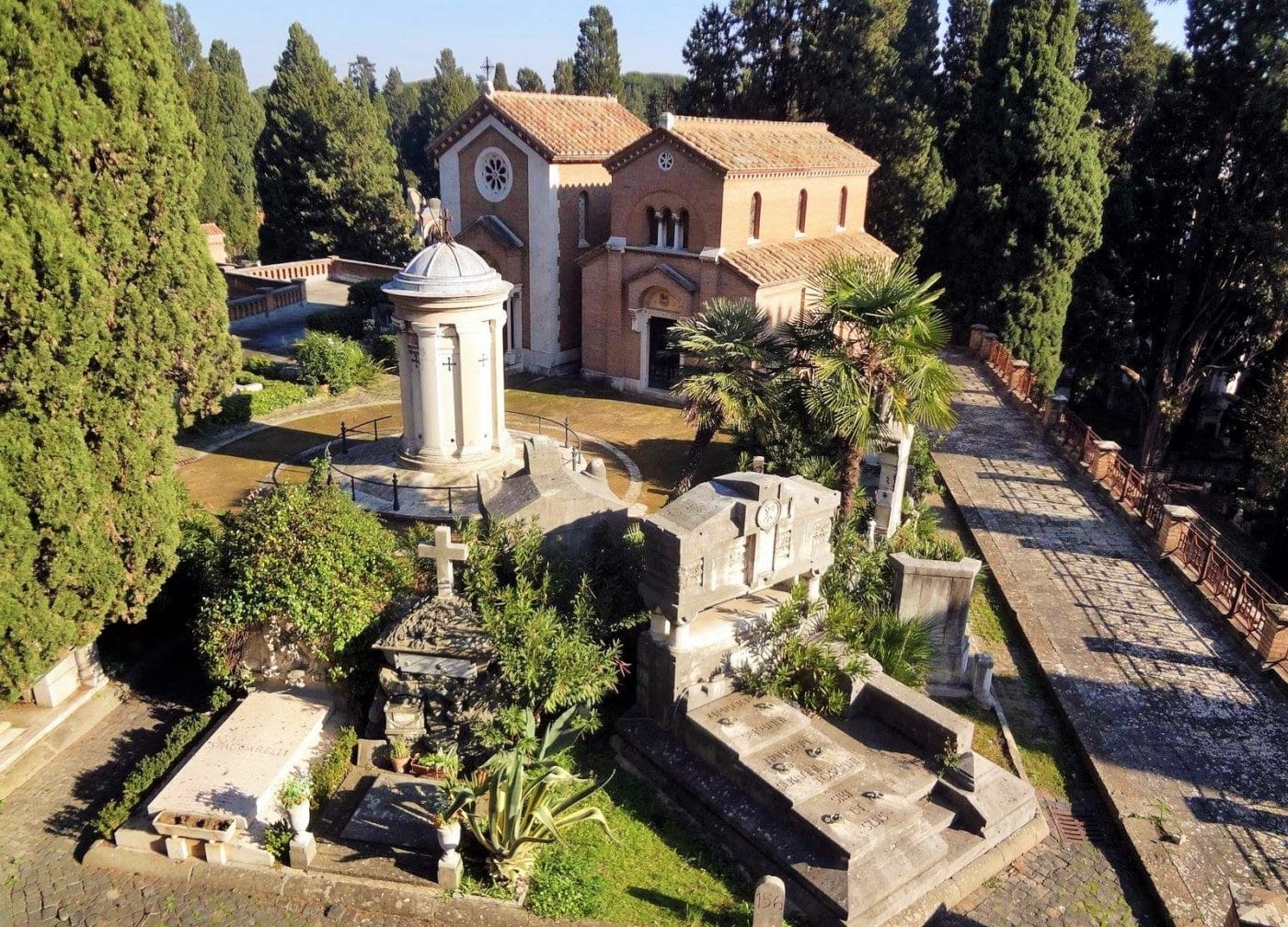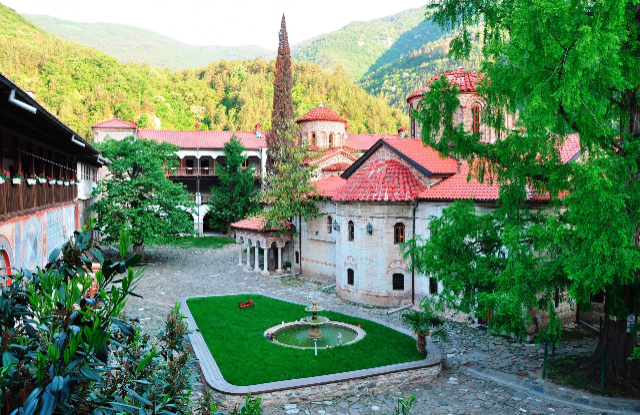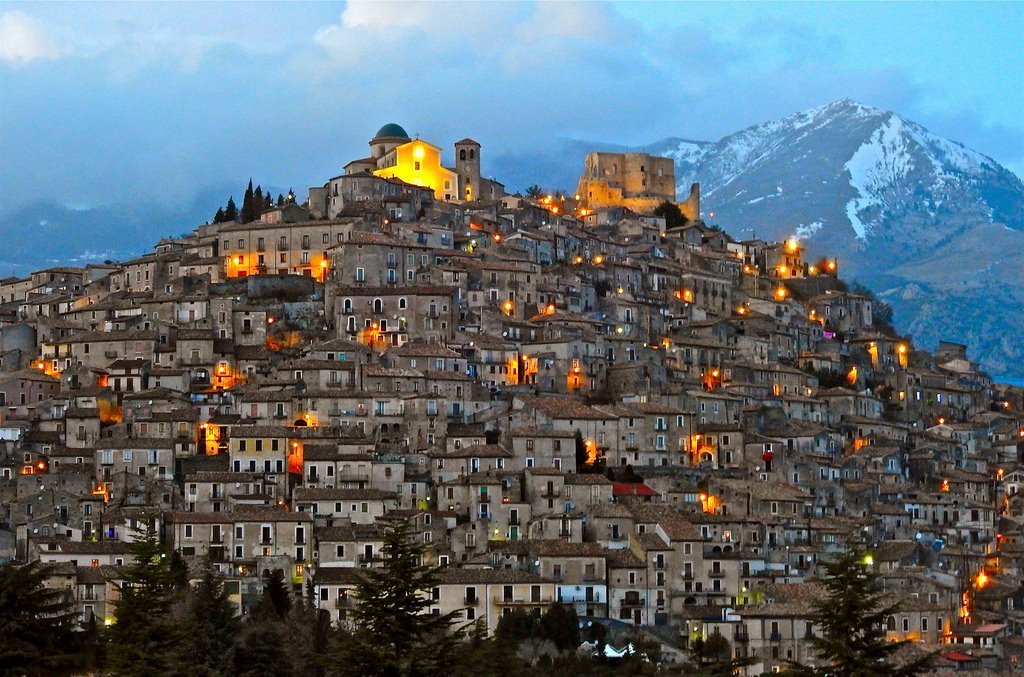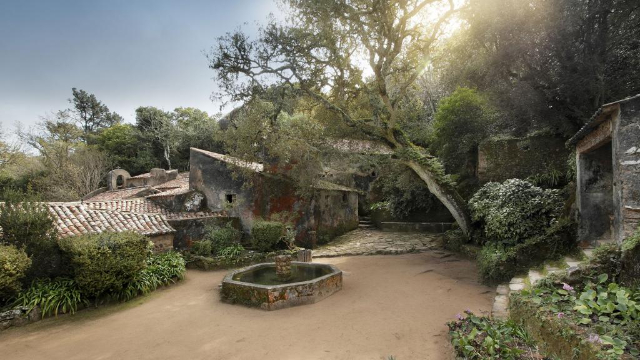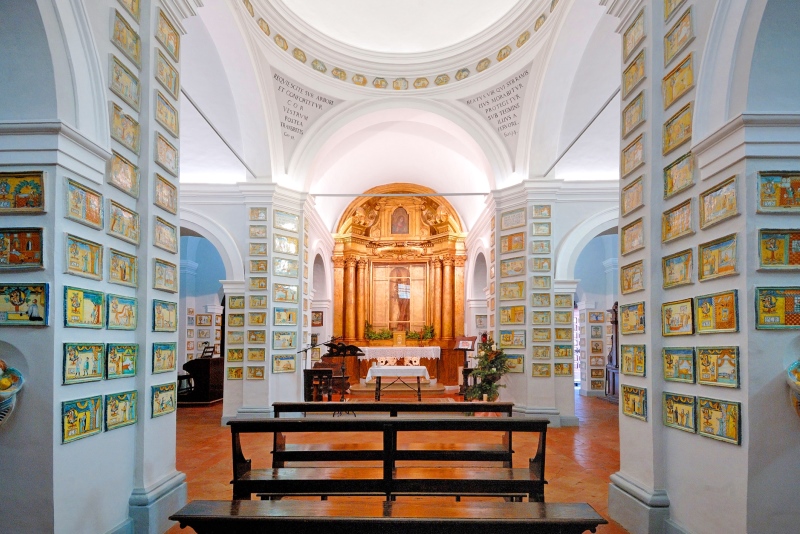In the Pontine plain, not far from the Appian Way, the Benedictine monastery of Santo Stefano di Fossanova. The Abbey of Fossanova (the place-name fossa nova is perhaps related to hydraulic systems connected to the nearby Amaseno river), is one of the most significant examples of Cistercian-Gothic art in Italy. Built on the ruins of a Roman villa of the Republican age, it was first a Benedictine monastery and later, by Innocent II, was granted to the Cistercians who built it in its present form.
Fossanova became a daughter of the French abbey of Hautecombe. Fossanova soon acquired a certain importance as evidenced by the numerous subsidiaries and the fact that three of its abbots became cardinals. In 1274 St. Thomas Aquinas, who was on his way to the Council of Lyon to represent Pope Gregory X, fell ill and died in the guest quarters of the abbey. The abbey church, dedicated to S. Maria, was consecrated by Innocenzo III in 1208; it reached the maximum splendour during the whole XIII century, starting from the following century it will begin a slow decline that will end in the XIX century with the transformation of the abbey complex in a rural village.
The main nucleus is constituted by the Church with the Cloister on which revolve the Refectory, the Chapter House, the Infirmary of the monks and the Abbot’s House, where St. Thomas Aquinas died in 1274.


